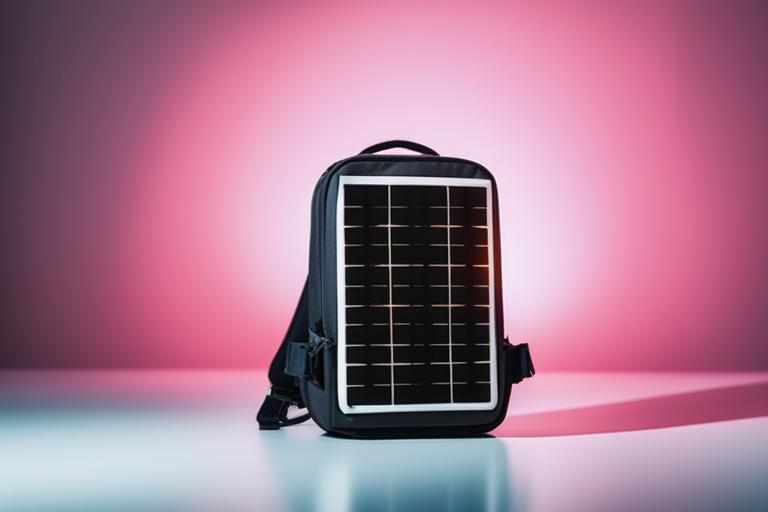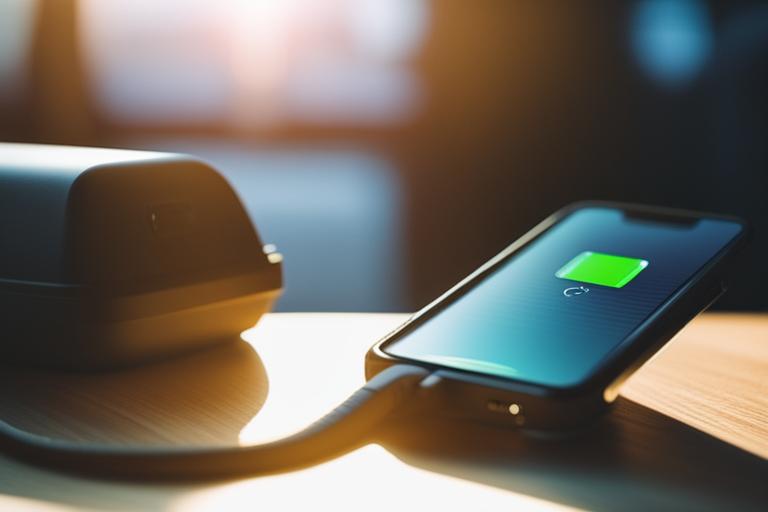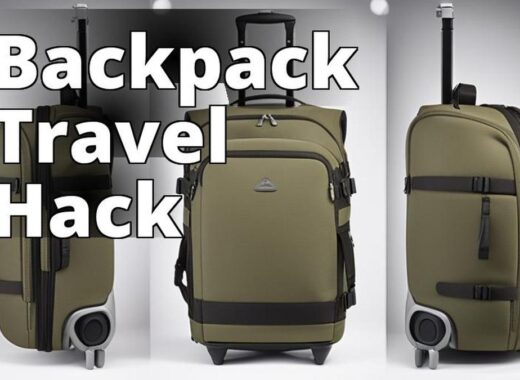What you’ll learn about solar-powered backpacks
- What a solar-powered backpack is and how it works, including its basic components and how solar panels convert sunlight into usable energy.
- The advantages of using a solar-powered backpack, such as reducing carbon footprint, cost-effectiveness, and usefulness for outdoor activities or emergencies.
- The features and design of solar-powered backpacks, their charging capabilities, buying considerations, maintenance tips, and availability of related accessories.

What is a Solar-Powered Backpack?
A solar-powered backpack is a backpack equipped with built-in solar panels that harness sunlight and convert it into usable energy. These innovative backpacks provide a portable and environmentally-friendly solution for charging electronic devices on the go. With their ability to charge devices anywhere there is sunlight, solar-powered backpacks have become a game-changer in the travel industry.
Functionality and Components of Solar-Powered Backpacks
At its core, a solar-powered backpack consists of three main components: solar panels, battery packs, and charging ports. The solar panels, typically made of high-efficiency photovoltaic cells, capture sunlight and convert it into electricity. This electricity is then stored in the battery pack, which acts as a power reservoir. The charging ports, often in the form of USB ports, allow users to connect their devices and charge them directly from the backpack.
The versatility and convenience of solar-powered backpacks lie in their ability to charge devices without relying on traditional charging methods or access to electricity. Whether you’re hiking in the mountains, camping in the wilderness, or simply commuting to work, a solar-powered backpack ensures that you never run out of battery power.

Advantages of Using a Solar-Powered Backpack
1. Environmental Benefits
One of the key advantages of using a solar-powered backpack is its positive impact on the environment. By utilizing solar energy, these backpacks significantly reduce our carbon footprint and dependence on non-renewable energy sources. Traditional charging methods, such as plugging into electrical outlets, often rely on fossil fuels for power generation. In contrast, solar power is clean and renewable, making it a sustainable choice for charging our devices.
2. Cost-Effectiveness
While the initial cost of a solar-powered backpack may be higher compared to a regular backpack, it offers long-term cost savings. By eliminating the need for traditional charging methods, such as purchasing additional power banks or constantly searching for electrical outlets, users can save money in the long run. Additionally, with the decreasing cost of solar technology, solar-powered backpacks are becoming more affordable and accessible.
3. Versatility and Convenience
Whether you’re an outdoor enthusiast, a frequent traveler, or someone who wants to be prepared for emergencies, a solar-powered backpack is a valuable asset. It provides a reliable charging solution in situations where access to electricity may be limited or unavailable. You can charge your devices while hiking, camping, or even during power outages. This versatility and convenience make solar-powered backpacks a must-have for those who value self-sufficiency and independence.

Features and Design of Solar-Powered Backpacks
Solar-powered backpacks come in various designs and sizes to cater to different needs and preferences. Some backpacks have integrated solar panels on the front or back, while others feature removable solar panels that can be attached to the backpack when needed. The design options ensure that users can find a backpack that suits their style and requirements.
Durability and weather resistance are crucial factors to consider when choosing a solar-powered backpack. These backpacks are designed to withstand various outdoor conditions, including rain, snow, and extreme temperatures. Look for backpacks made from durable materials that offer protection for the solar panels and electronic components.
In addition to the solar charging functionality, many solar-powered backpacks come with extra features to enhance usability. These may include built-in USB ports, allowing for easy connection and charging of devices, multiple compartments for organization, and padded straps for comfort during long trips. Ergonomic design and weight distribution play an important role in ensuring a comfortable and balanced wear, especially when carrying heavy loads.

Charging Capabilities of Solar-Powered Backpacks
Solar-powered backpacks vary in their charging capabilities, depending on the wattage and voltage output of the solar panels. Higher wattage panels can generate more electricity, resulting in faster charging times. Similarly, backpacks with higher voltage output are compatible with a wider range of devices.
Most solar-powered backpacks can charge smartphones, tablets, cameras, GPS devices, and other small electronic devices. It’s important to check the specifications of the backpack and ensure that it is compatible with the devices you intend to charge.
The charging time of solar-powered backpacks depends on the amount of sunlight available and the capacity of the battery pack. In optimal conditions, a few hours of exposure to direct sunlight can fully charge the battery pack. However, it’s important to note that charging times may be longer in cloudy or low-light conditions. Some backpacks also have the ability to charge multiple devices simultaneously, making them even more convenient for users.
| Charging Capabilities | Buying Considerations |
|---|---|
| Wattage and voltage output affect charging speed and device compatibility | Capacity and weight should match your needs and comfort |
| Can charge smartphones, tablets, cameras, GPS devices, and other small electronic devices | Quality of solar panels is important for optimal charging performance |
| Charging time depends on sunlight availability and battery pack capacity | Battery capacity should match your device power requirements |
| Some backpacks can charge multiple devices simultaneously | Research reputable brands and read customer reviews |
| Check for warranty and after-sales support |
Buying Considerations for Solar-Powered Backpacks
When purchasing a solar-powered backpack, there are several factors to consider to ensure you make the right choice.
1. Capacity and Weight
Consider the capacity of the backpack in terms of both storage space and battery capacity. Choose a size that suits your needs and ensures that the backpack has enough space to carry your essentials. Additionally, pay attention to the weight of the backpack, as it will affect your comfort during extended periods of wear.
2. Quality of Solar Panels
The efficiency and quality of the solar panels are crucial for optimal charging performance. Look for backpacks with high-efficiency solar panels that can generate more electricity with less sunlight. It’s worth investing in a backpack with reputable solar panel technology to ensure a consistent and reliable charging experience.
3. Battery Capacity and Device Compatibility
Check the battery capacity of the backpack to ensure it can provide sufficient power for your devices. Consider the devices you intend to charge and their power requirements. It’s essential to choose a backpack with a battery capacity that matches your charging needs.
4. Brand Reputation and Customer Reviews
Research reputable brands that specialize in solar-powered backpacks and read customer reviews to gather insights about the product’s performance and durability. Customer reviews provide valuable feedback from real users and can help you make an informed decision.
5. Warranty and After-Sales Support
Check if the manufacturer offers any warranty or after-sales support for the backpack. A reliable warranty ensures that you’re protected against any potential defects or malfunctions.
Maintenance and Care for Solar-Powered Backpacks
To ensure the optimal performance and longevity of your solar-powered backpack, proper maintenance and care are essential.
Regularly clean the solar panels to remove any dirt or debris that may hinder their efficiency. Use a soft cloth and mild detergent to gently wipe the surface of the panels. Avoid using abrasive materials or harsh chemicals that could damage the panels.
When not in use, store the backpack in a cool and dry place to protect it from extreme temperatures and moisture. Avoid exposing the backpack to direct sunlight for extended periods when not charging, as excessive heat can degrade the battery pack.
Regularly inspect the battery pack and charging ports for any signs of damage or wear. If you notice any issues, contact the manufacturer for guidance or repairs. Following these maintenance practices will ensure that your solar-powered backpack continues to perform optimally.
Price Range, Availability, and Related Accessories
The price range of solar-powered backpacks varies depending on factors such as brand, features, and quality. Entry-level backpacks can range from $50 to $100, while higher-end models with advanced features can cost upwards of $200. Consider your budget and the features you require when choosing a backpack.
Solar-powered backpacks can be found in various places, including online retailers, outdoor stores, and specialty shops. Online platforms like Amazon often have a wide selection of options to choose from. It’s recommended to visit physical stores to try on different backpacks and assess their quality before making a purchase.
Keep an eye out for any potential discounts or promotions that may be available. Manufacturers occasionally offer special deals or bundles that can provide additional value for money.
In addition to the backpack itself, there are related accessories that can enhance the functionality of a solar-powered backpack. Portable solar panels can be used to supplement the charging capabilities of the backpack, allowing for even more flexibility and power generation. Power banks can also be useful for storing excess solar energy generated during the day for later use.
Personal Experience: How a Solar-Powered Backpack Saved My Outdoor Adventure
Imagine this: You’re on a thrilling hiking trip in the mountains, far away from civilization, when suddenly your phone battery dies. You had relied on it for navigation, communication, and capturing breathtaking photos of the scenery. Panic sets in as you realize you’re completely cut off from the outside world. This was the situation I found myself in during a recent hiking expedition.
Luckily, I had come prepared with a solar-powered backpack. As I unfolded the solar panels and attached them to my backpack, I watched as the sun’s rays started to power up the battery pack. Within a short amount of time, my phone was charging again, and I was back in action.
Throughout the rest of my trip, the solar-powered backpack became my lifeline. Not only did it keep my phone charged, but it also provided power for my GPS device and headlamp during nighttime hikes. I didn’t have to worry about finding an electrical outlet or carrying extra batteries. The backpack’s built-in USB ports conveniently allowed me to charge multiple devices simultaneously.
Not only did the solar-powered backpack save my adventure, but it also made me realize the countless advantages of using renewable energy in outdoor activities. I was reducing my carbon footprint and minimizing my dependence on non-renewable energy sources. It was a win-win situation.
Now, I never embark on any outdoor excursion without my trusted solar-powered backpack. It has become an essential part of my gear, ensuring that I stay connected, safe, and environmentally conscious. I encourage all outdoor enthusiasts to consider investing in a solar-powered backpack. It’s not just a backpack; it’s a game-changer that revolutionizes travel and empowers you to explore the world sustainably.
Conclusion
Solar-powered backpacks have revolutionized the way we travel and charge our electronic devices. By harnessing the power of the sun, these backpacks offer a sustainable and eco-friendly charging solution. They provide numerous advantages, including environmental benefits, cost-effectiveness, and versatility.
When choosing a solar-powered backpack, consider factors such as capacity, weight, quality of solar panels, battery capacity, and device compatibility. Research reputable brands and read customer reviews to ensure you make an informed decision. Proper maintenance and care are essential for optimal performance, including cleaning the solar panels and regularly inspecting the battery pack.
Solar-powered backpacks are available at various price points and can be purchased from online retailers, outdoor stores, and specialty shops. Consider investing in related accessories such as portable solar panels or power banks to enhance the functionality of your backpack.
Embrace the power of solar energy and invest in a solar-powered backpack today. Join the movement towards sustainable and eco-friendly charging solutions, and never be without power on your adventures again.
If you have any further questions or concerns about solar-powered backpacks, please feel free to reach out. We’re here to help you make the best choice for your charging needs.
John Smith is an experienced outdoor enthusiast and sustainable travel advocate. With a background in environmental science and a passion for exploring the great outdoors, John has dedicated his career to promoting eco-friendly travel solutions.
John’s expertise in renewable energy technologies makes him a trusted source on solar-powered backpacks. He has conducted extensive research on the functionality and components of these innovative backpacks, and has written numerous articles on the advantages of using solar-powered backpacks for travel.
In addition to his academic qualifications, John has firsthand experience using solar-powered backpacks during his outdoor adventures. He has tested various models and evaluated their charging capabilities, durability, and overall performance. His personal experience with these backpacks adds a practical perspective to his writing.
John believes that solar-powered backpacks are not only environmentally beneficial, but also cost-effective and convenient for travelers. Through his articles, he aims to inspire others to embrace sustainable travel practices and unleash the potential of solar-powered backpacks.




